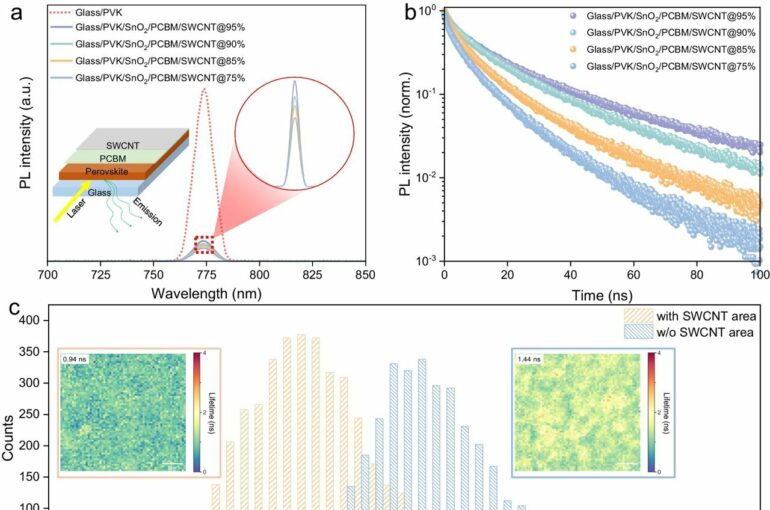Researchers have built a new kind of two-faced (bifacial) panel. They used single-walled carbon nanotubes as both front and back electrodes.
These tubes are just 2.2 nanometers across. That is slightly thinner than a strand of human DNA. A piece of paper is thicker than 45,000 nanotubes stacked on top of each other.
The study is published in the journal Nature Communications, and the team included Surrey scientists working with colleagues at the University of Cambridge, the Chinese Academy of Sciences, Xidian University, and Zhengzhou University, China.
Dr. Jing Zhang, research fellow at Surrey’s Advanced Technology Institute, said, “Our bifacial cells can harvest sunlight from both front and back panels. This generates more energy and depends less on which angle the light hits them.
“The carbon nanotubes we use are very transparent and conduct electricity well. They have the potential to bring clean power within reach for millions of people—and we look forward to seeing how our invention will be used.”
The panels can generate more than 36 mW per square centimeter—and the back panel produced nearly 97% of the power that the front panel did. That compares to 75%–95% for most bifacial panels currently on the market.
Professor Ravi Silva CBE, the director of the Advanced Technology Institute, said, “The world cannot decarbonize without solar power. Yet that requires much cheaper solar energy than is currently available. Panels that can absorb the sun’s energy on both sides are a great way to make the technology more cost-effective.
“We have produced arguably the highest efficiency single junction solar cell to date. Our panels cost 70% less to make than a normal one-sided solar panel. This could significantly modify the market and simplify the architectures required based on perovskite solar cells.”
More information:
Jing Zhang et al, High-performance bifacial perovskite solar cells enabled by single-walled carbon nanotubes, Nature Communications (2024). DOI: 10.1038/s41467-024-46620-1
Provided by
University of Surrey
Citation:
Two-faced solar panels can generate more power at up to 70% less cost (2024, March 18)



